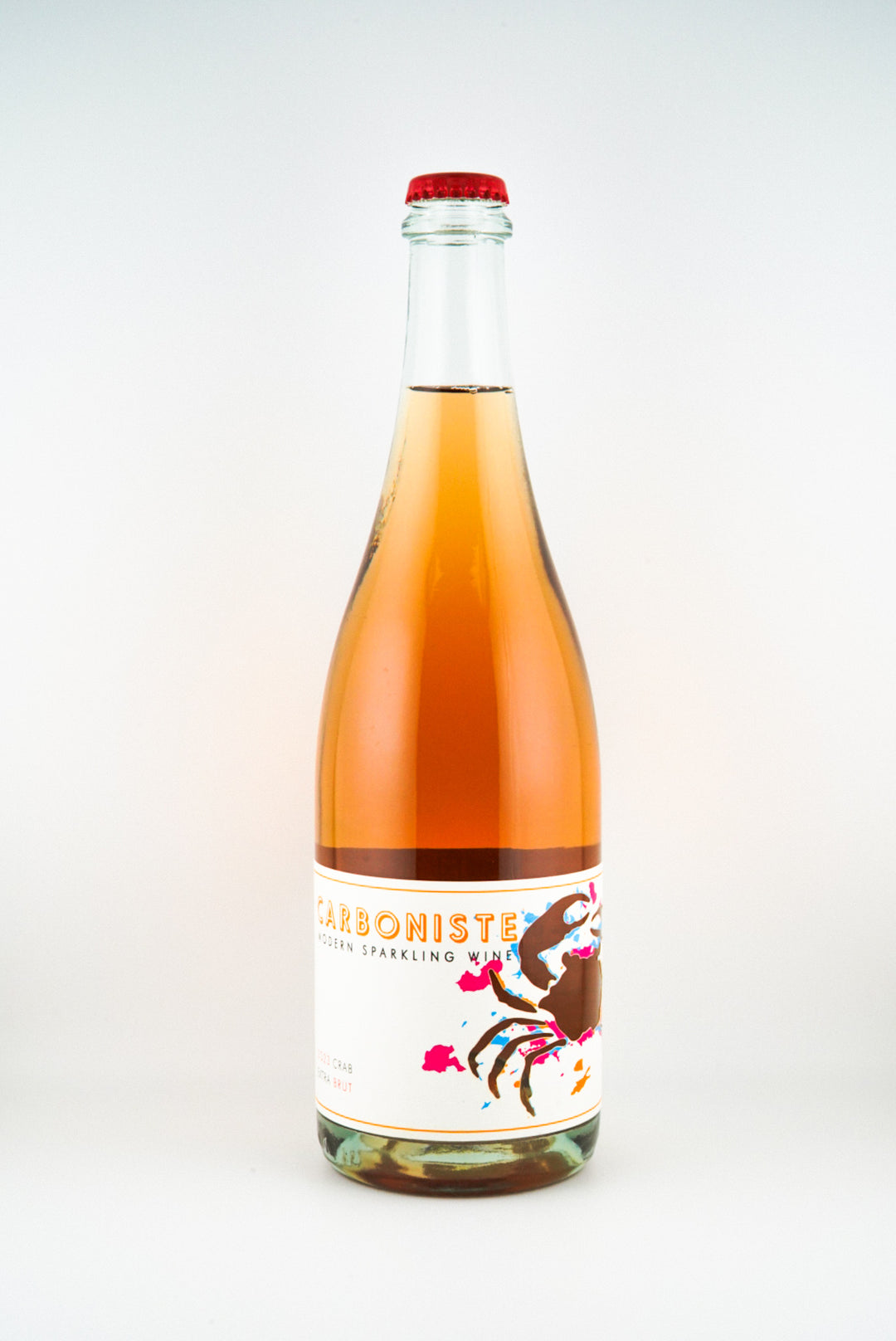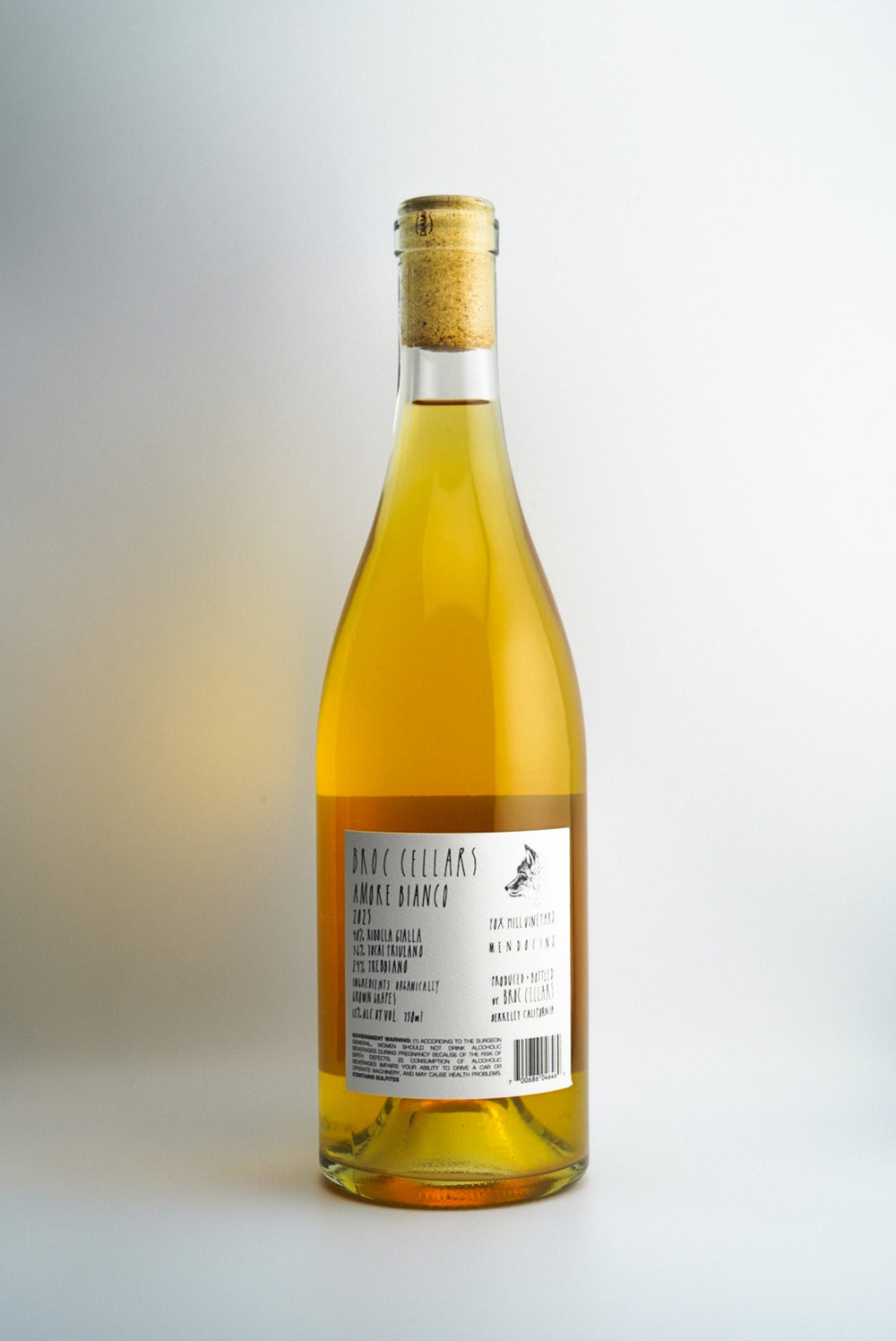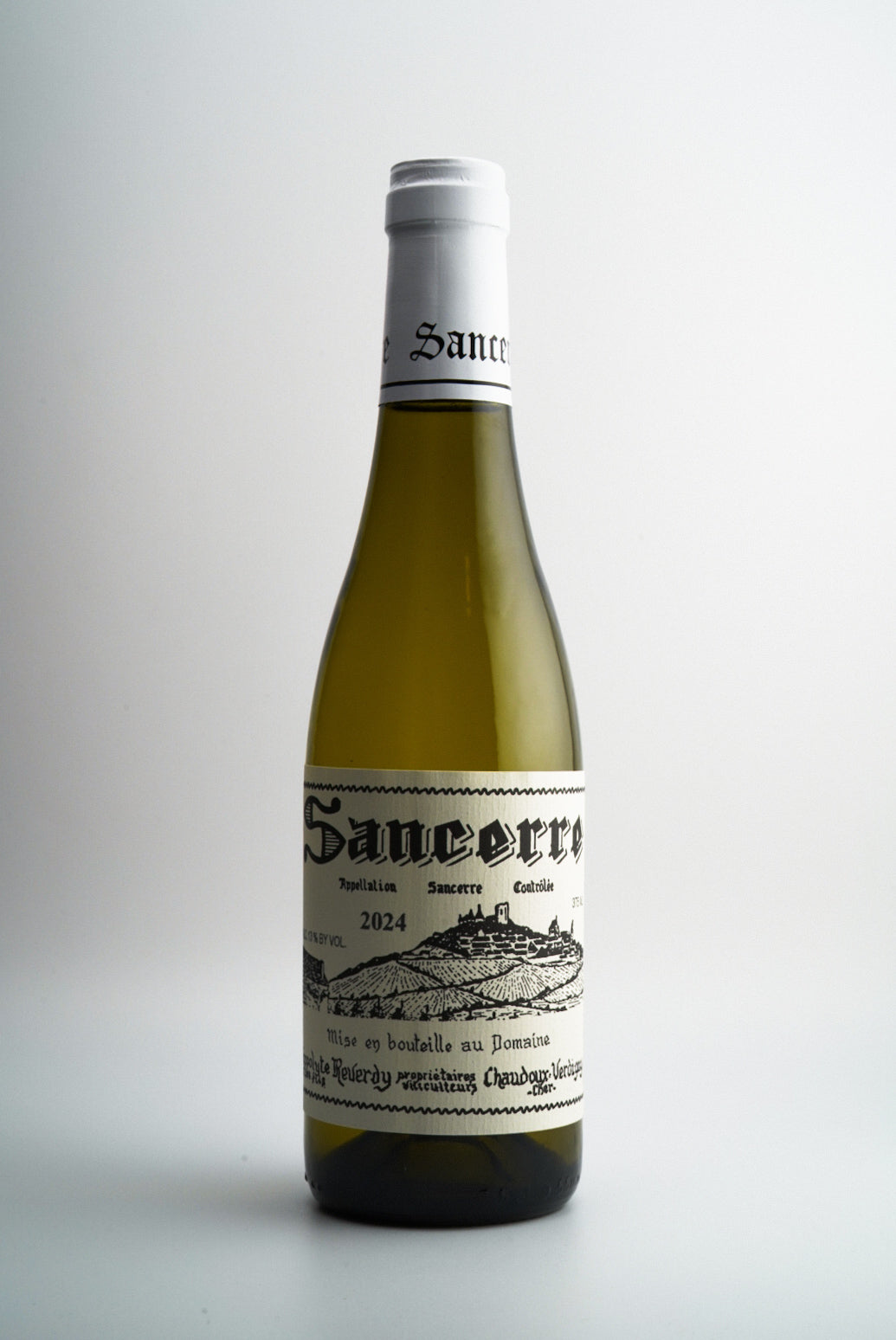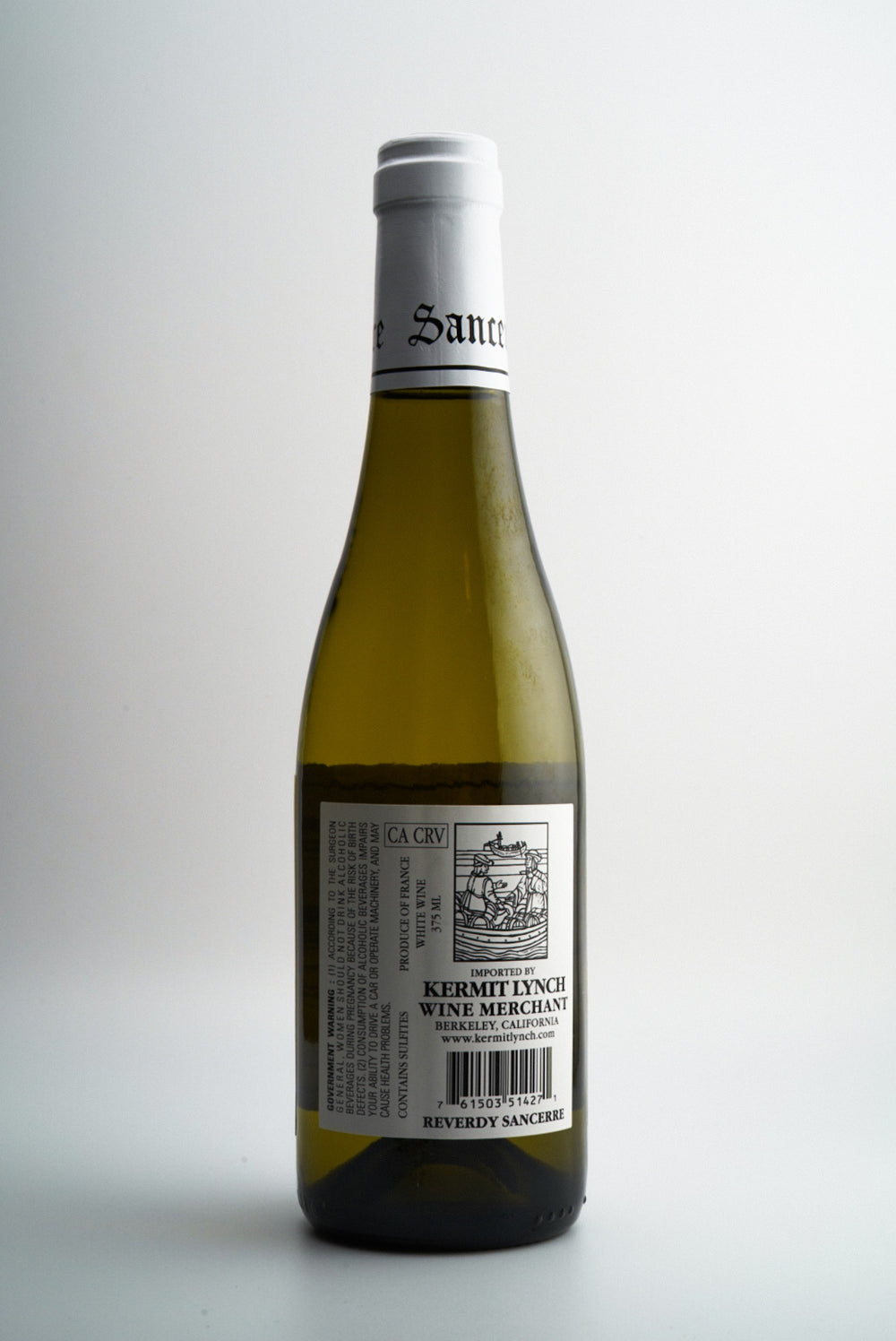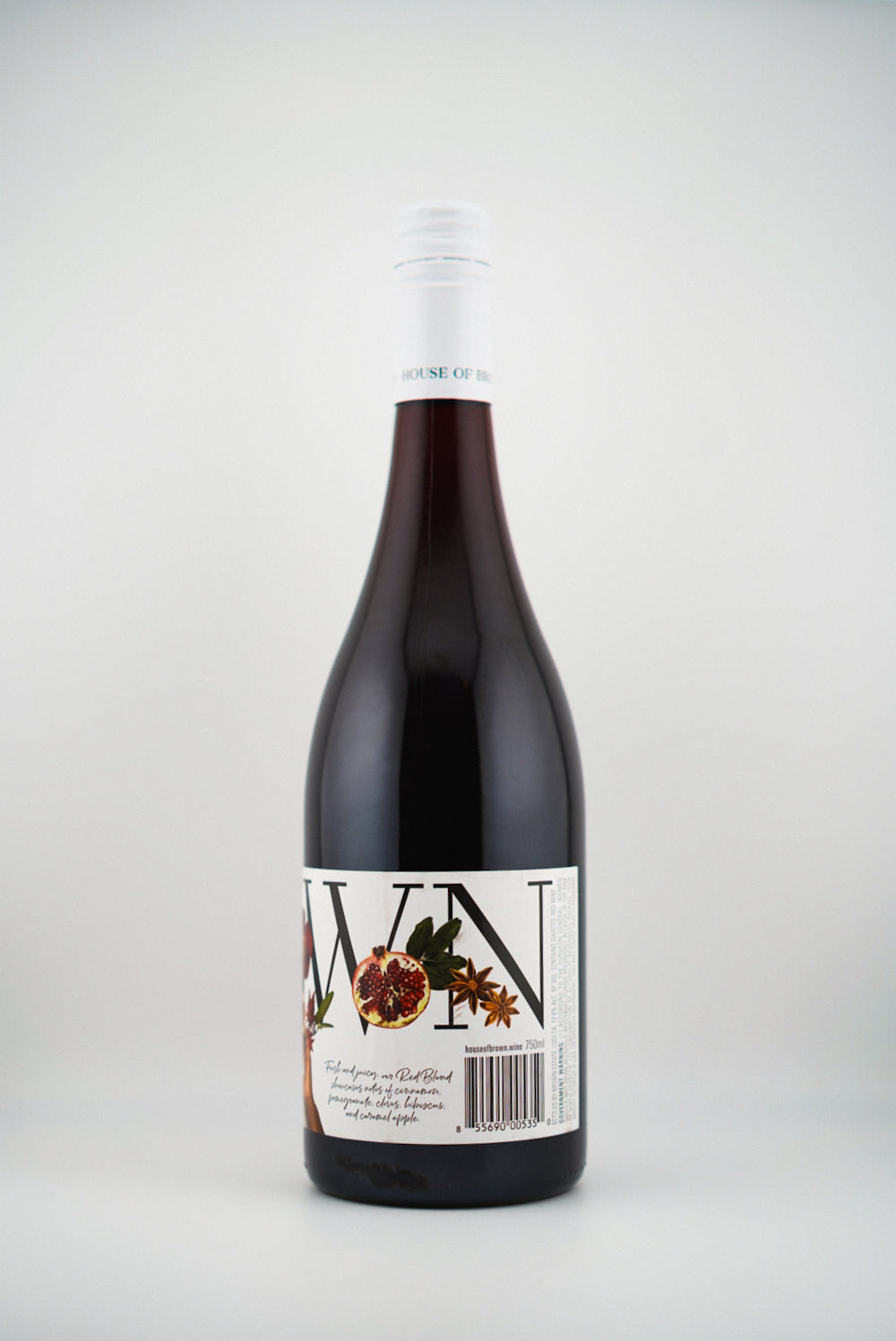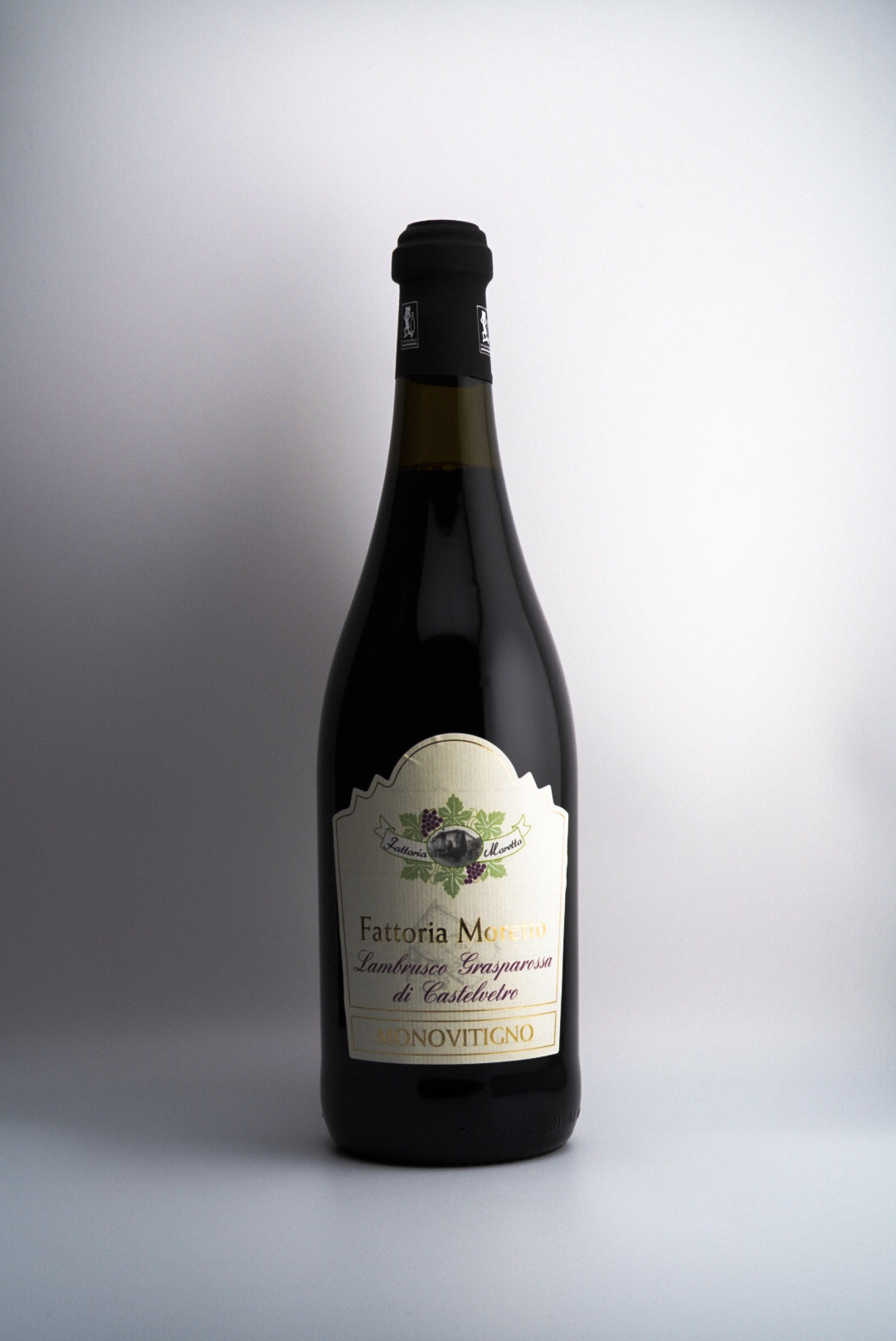50 of California's Most Important Vineyards
California’s Most Important Vineyards – A Heritage Worth Preserving

*Each vineyard listed is accompanied by a list of the winemakers and wines that they produce from it. Simply drinking wine made from these vineyards will ensure they're here for centuries to come.
INTRO
California’s vineyards are more than what meets the eye – they are living monuments to the state’s AgriCultural heritage, biodiversity, and the generations of farmers who have tended them. Many of these vineyards boast century-old old vine plantings (some planted in the 1880s!) that produce wines of remarkable character and connect us directly to California’s past, if we let them. Yet, as urban development encroaches and economic pressures mount, these hallowed grounds are at risk of being uprooted for housing tracts, storage units, and strip malls. The families who farm them currently face declining wine consumption, rising costs, and extreme weather. Our goal for this blog is simple: by spreading the word of these vineyards, and drinking the wine they produce, we can literally help keep these precious vines in the ground and protect a priceless heritage for future generations.[1][2]
In the spirit of stewardship embodied by vintners like Morgan Twain-Peterson MW of Bedrock Wine Co., Tegan Passalacqua of Sandlands, and sommelier-turned-farmer Rajat Parr of Phelan Farms, we present California’s Top 50 Vineyards. Each entry below is a testament to perseverance – gnarled, vines that have weathered Prohibition, phylloxera, world wars, and real estate booms – and a call to action for wine lovers to help preserve them, one bottle at a time. (Notes: Vineyards are listed in no particular order. In compiling this list, we drew on sources like Jancis Robinson’s Old Vine Register and the Historic Vineyard Society (with the help of AI). Please reach out to us with any factual errors. We focused on vineyards still actively farmed. Many of these sites are registered “old vines” and produce fruit for some of California’s most soulful wines. Some may not be considered to be "old vine" but we included them due to special nature of the site and in hopes that they will achieve the coveted title of California Heritage Vineyard.)
1. Teldeschi Ranch (Dry Creek Valley, Sonoma)

Source: https://www.carlislewinery.com/teldeschi
History & Significance: A cornerstone of Dry Creek Valley’s Zinfandel legacy, the Teldeschi Ranch has vines dating back to the 1880s. This sprawling vineyard (tended by the Teldeschi family for generations) includes ancient, head-trained Zinfandel along with Petite Sirah and Carignan. The oldest block – over 130 years old – is so healthy and virus-free that its budwood has been used to propagate other vineyards.[3] Wines from Teldeschi Ranch capture Dry Creek’s warm, brambly spice and depth, thanks to the iron-rich gravelly loam soils and the vine age. Once a key source for iconic Zinfandels (Ravenswood’s and Swan’s bottlings in the past), today it’s championed by heritage vintners like Bedrock Wine Co. who celebrate its “precious old vines”.
- Location: East bench of Dry Creek Valley, Sonoma (mid-valley, rolling up the hillside).[3]
- Originally Planted: 1880s (established by the Teldeschi family).[3]
- Average Vine Age: ~100–135 years (oldest block planted circa 1885).[3]
- Own-Rooted: Unknown (likely mixed – some ancient vines on original roots; others may be on St. George rootstock post-phylloxera).
- Dry-Farmed: Yes (historically dry-farmed head-trained vines).
- Organic: Practicing sustainable (not certified organic).
- Wineries: Teldeschi Winery, Bedrock Wine Co., Once & Future; historical: Ravenswood & Joseph Swan; Truett-Hurst Zinfandel.[4]
2. Evangelho Vineyard (Contra Costa County)

Source: https://www.turleywinecellars.com/vinesandwines/del-barba-vineyard-zinfandel-af2f9
History & Significance: Evangelho Vineyard is a miraculous survivor of suburban sprawl – a 120-year-old vineyard planted in the 1890s on a sand dune at the confluence of the Sacramento and San Joaquin Rivers.[5] Its goblet-shaped vines of Zinfandel, Carignan, Mourvèdre (and assorted interplanted “mixed blacks”) sit on 40-foot-deep banks of pure sand, which protected them from phylloxera and remain on their own roots.[5] This site’s unique conditions – breezy Delta air and well-draining sand – yield reds of surprising freshness and elegance (noted for low pH and bright fruit).[5] Once farmed by Frank Evangelho, the vineyard is now owned and lovingly tended by Bedrock Wine Co., which credits the “viticultural survivor” status of Evangelho to these extreme soils and PG&E power lines overhead (ironically, the power utility opposes development under the lines, creating a sanctuary from bulldozers).[1] Evangelho is precious California heritage: an ungrafted, dry-farmed oasis amid tract homes, producing spicy, silky reds that are truly bottled history.
- Location: Antioch, Contra Costa County (sandy river delta benchland).[5]
- Originally Planted: 1890s (by Portuguese immigrants; later tended by the Evangelho family).[5]
- Average Vine Age: ~120–130 years.[5]
- Own-Rooted: Yes (planted on original roots in Delhi sand; phylloxera-free).[5]
- Dry-Farmed: Yes (no irrigation, reliance on deep roots and Delta moisture).[5]
- Organic: Practicing organic (not certified; minimal intervention).
- Wineries: Bedrock, Ridge, Turley, Extradimensional Wine Co. Yeah!, T-Vine Winery, Neyers Vineyards, Three Wine Company. [5]
3. Kirschenmann Vineyard (Mokelumne River, Lodi)

Source: https://historicvineyardsociety.org/vineyard/kirschenmann-vineyard
History & Significance: Sandy soil, ancient vines, and a new lease on life – that’s the story of Kirschenmann Vineyard. Planted in 1915 in an oxbow of the Mokelumne River outside Victor, this 15-acre vineyard was owned by the Kirschenmann family for decades until Tegan Passalacqua purchased it in 2012.[6] The vines – primarily Zinfandel with a smattering of Carignan, Cinsault, and Mondeuse Noire – remain on their own roots and dry-farmed in Lodi’s talc-like sandy loam.[6] Now over a century old, these gnarled, bush-trained vines thrive under Tegan’s careful organic stewardship. Kirschenmann fruit produces elegant, red-fruited Zinfandels with Lodi’s hallmark perfume. Beyond the wines, the vineyard stands as a model of preservation: Tegan often notes the vines are “thriving under watchful care”, proving that with dedication, old vineyards can be saved from neglect.[6]
- Location: Victor, CA (Mokelumne River AVA, east side Lodi – in a riverbend “oxbow”).[7]
- Originally Planted: 1915 (by the Kirschenmann family).[7]
- Average Vine Age: ~108 years.
- Own-Rooted: Yes (planted on own roots in sandy soil, no grafts).[6]
- Dry-Farmed: Yes (no irrigation – deep-rooted vines tapping the water table).[6]
- Organic: Practicing organic (sustainable methods; minimal chemicals).
- Wineries: Turley, Sandlands, Bedrock, Arnot-Roberts, Precedent.[7]
4. To Kalon Vineyard (Oakville, Napa Valley)

Source: https://www.guildsomm.com/public_content/features/articles/b/stamp/posts/the-true-story-of-to-kalon-vineyard
History & Significance: Few vineyards in America carry the mystique of To Kalon, a name meaning “the highest beauty” in Greek. Established in 1868 by Napa pioneer H.W. Crabb, To Kalon’s original 240 acres in western Oakville were planted to dozens of grape varieties and gained fame in the 19th century for Crabb’s award-winning wines.[8] Today, To Kalon is a patchwork of esteemed holdings (shared primarily by Robert Mondavi Winery, the University of California, and Andy Beckstoffer) totaling over 500 acres of coveted Cabernet Sauvignon and other Bordeaux grapes. While most vines are younger (replanted over time), one legendary section – the Mondavi I-Block – contains own-rooted Sauvignon Blanc vines dating to 1945, among Napa’s oldest white vines. In the modern era, To Kalon fruit has become synonymous with ultraclassic Napa Cabernet. Controversy & lore swirl around the To Kalon name, but its pedigree is unquestioned.[9]
- Location: Oakville AVA, Napa Valley (west of Hwy 29 at base of Mayacamas range – the historic Crabb estate).[8][10]
- Originally Planted: 1868 (H.W. Crabb’s first vines; expanded through 1890s).[8]
- Average Vine Age: Varies – oldest current block ~80 years (1940s Sauvignon Blanc); majority Cabernet blocks 20–30 years old.
- Own-Rooted: Partially (the 1945 SB vines are own-rooted; most Cab vines are grafted).
- Dry-Farmed: Historically yes; today mostly minimal drip irrigation.
- Organic: Mixed – sustainably farmed across owners.
- Wineries: Robert Mondavi, Schrader, MACDONALD, Opus One, Bedrock, Realm Cellars Paul Hobbs, Williams Selyem, Macauley, and more.
5. Bien Nacido Vineyard (Santa Maria Valley, Santa Barbara)

Source: https://twomey.com/vineyards/central-coast/bien-nacido-vineyard/
History & Significance: Bien Nacido is often dubbed California’s Grand Cru of the Central Coast. Established in 1973 on the Miller family’s historic ranch, Bien Nacido was a bold pioneer in Santa Maria Valley, proving that cool, fog-kissed hills could produce world-class Pinot Noir and Chardonnay.[11] The initial planting has expanded, and many original vines still produce today – notably the famous “W Block” Chardonnay (Wente clone, ungrafted, 1973).[11] Bien Nacido’s benchland terroir – rocky shale with limestone – and ocean-cooled climate imbue wines with intense aromatics, minerality, and elegance.
- Location: Santa Maria Valley AVA, Santa Barbara County (windy, cool climate canyon east of Santa Maria).[11]
- Originally Planted: 1973 (Miller family; first commercial vines in Santa Maria since Prohibition).[11]
- Average Vine Age: ~40–50 years (many original 1970s plantings still in production).[11]
- Own-Rooted: Yes, partly (early plantings like Chardonnay W Block are ungrafted).[11]
- Dry-Farmed: Partially – some drip irrigation used; older blocks dry-farmed as feasible.
- Organic: Sustainably farmed (SIP certified); moving toward organic practices.
- Wineries: Bien Nacido Estate, Au Bon Climat, Ojai, Foxen, Clendenen, Fess Parker, Calera, Optik Wines .[11]
6. Sanford & Benedict Vineyard (Sta. Rita Hills, Santa Barbara)
 Source: https://www.sanfordwinery.com/About/History
Source: https://www.sanfordwinery.com/About/History
History & Significance: Sanford & Benedict (S&B) is the vineyard that started the Pinot Noir revolution in Santa Barbara County. Planted in 1971 by Richard Sanford and Michael Benedict, it was the region’s first modern vineyard and proved that Pinot Noir and Chardonnay could thrive in this cool, maritime valley.[12] The early S&B vines (including original own-rooted Chardonnay and Pinot selections) became mother blocks for many Central Coast plantings. Gnarled old Pinot vines from the mid-1970s still produce low yields of exceptional fruit. The vineyard is now cared for by the Terlato family (Sanford Winery).
- Location: Sta. Rita Hills AVA, Santa Barbara County (calcium-rich soils).[12]
- Originally Planted: 1971 (first Pinot/Chardonnay planted in the region).[12]
- Average Vine Age: ~45–50 years.
- Own-Rooted: Partially (original Chardonnay own-rooted; Pinot mostly grafted).
- Dry-Farmed: Mostly – very limited irrigation.
- Organic: Practicing sustainable (cover-cropping, minimal sprays).
- Wineries: Sanford Winery, Tatomer, Chanin, Au Bon Climat, Testarossa Winery, Fess Parker, Chanin Wines, Tyler Winery, Sandhi Wines, Presqu'ile and more.
7. Bassi Vineyard (SLO Coast, San Luis Obispo County)
History & Significance: Bassi Vineyard is a modern gem with an old-world soul. Planted in the early 2000s near Avila Beach by Mike Sinor, Bassi quickly earned renown for its extreme coastal character – it lies a mere 1.2 miles from the Pacific Ocean on windswept, hilly terrain.[13] Farming is challenging but yields distinctive, saline wines (Chardonnay, Pinot Noir, Syrah, Albariño). Long farmed organically (and biodynamically for periods), the site’s untamed nature has been preserved. In 2024, it was purchased by Mikey & Gina Giugni, who continue its sustainable stewardship.[13]
- Location: SLO Coast AVA (Avila Beach) – ultra-coastal (1.2 miles from ocean).[13]
- Originally Planted: ~2002.
- Average Vine Age: ~20 years.
- Own-Rooted: No.
- Dry-Farmed: No.
- Organic: Yes – certified organic (historic biodynamic periods).[13]
- Wineries: Sinor-LaVallee, Scar of the Sea, Lady of the Sunshine, Dunites Wine Co.[13]
8. Lone Wolf Vineyard (Southern California – Pechanga area, Temecula)
History & Significance: Hidden in the chaparral-covered hills of northern San Diego/Riverside County, Lone Wolf Vineyard was planted in 1896 – likely with Mission (Listán Prieto), Zinfandel, and other grapes – and then essentially abandoned for over 60 years.[14] The old vines went feral until 2020 when a team led by Abe Schoener (Los Angeles River Wine Co.) and Rajat Parr began rehabilitating the site. Remarkably, many original vines survived. Today Lone Wolf is being nursed back to productivity using organic methods, emblematic of Southern California’s lost wine history.[14]
- Location: Pechanga area, inland San Diego/Riverside County (near Temecula, on Pechanga tribal lands).[14]
- Originally Planted: 1896; revived 2020.[14]
- Average Vine Age: ~127 years.
- Own-Rooted: Yes.
- Dry-Farmed: Yes.
- Organic: Yes (during restoration).
- Wineries: Los Angeles River Wine Co. “Lone Wolf” field blend; Scythian Wine Co.[14]
9. Montecillo Vineyard (Moon Mountain District, Sonoma)

Source: https://www.carlislewinery.com/montecillo
History & Significance: Perched at 1,725 feet on a rocky shoulder of the Mayacamas above Kenwood, Montecillo Vineyard is one of Sonoma’s most storied high-elevation sites for Cabernet Sauvignon. Originally planted in the 1960s by the Horne family (and later tended by Louis M. Martini), Montecillo was among the first mountain Cabernet vineyards in Sonoma. Its old Cabernet blocks – dry-farmed on red volcanic loam – produce small berries and intensely structured wines. Notably, these vines were planted on St. George rootstock and never irrigated.[15]
- Location: Moon Mountain/Mt. Veeder border (above Sonoma Valley near Kenwood).[15]
- Originally Planted: Mid-1960s.
- Average Vine Age: ~55+ years.
- Own-Rooted: No (St. George).
- Dry-Farmed: Yes.[15]
- Organic: Converting to organic (sustainably farmed).
- Wineries: Bedrock, Carlisle, Desire Lines Cabernet, Stewart Cellars - coming soon (owners), DuMOL, Ordaz Family Wines, Turley, Arnot-Roberts, Turks Head Wines, VomBoden, Beta, .
10. Monte Rosso Vineyard (Sonoma Valley/Moon Mountain)
History & Significance: A true California “grand cru,” Monte Rosso has been yielding legendary wines for well over a century. First planted in 1886 by Emmanuel Goldstein (Mount Pisgah) and later expanded by Louis M. Martini, Monte Rosso retains some of its original 1880s vines: gnarled head-trained Zinfandel and Semillon, plus Cabernet blocks from the 1940s still contributing fruit.[16] Wines are famed for acidity, concentration, and a mineral streak – a reflection of the site’s red volcanic loam, elevation, and low yields. Much of it is now under a conservation easement.
- Location: Moon Mountain District AVA (above Sonoma Valley).[16]
- Originally Planted: 1886.[16]
- Average Vine Age: Varies – oldest ~137 years; Cab blocks ~80 years.
- Own-Rooted: Some original vines may be own-rooted; most on St. George/modern rootstocks.
- Dry-Farmed: Yes (historically; minimal irrigation for young vines).
- Organic: Sustainable; conservation-focused.[17]
- Wineries: Louis M. Martini (historic), Ridge, Robert Biale, Bedrock, Carlisle.[16]
11. Beckstoffer Heritage Vineyards (Napa Valley) — Dr. Crane, Bourn, Las Piedras, Georges III, Missouri Hopper
History & Significance: A suite of historic Napa sites stewarded by Andy Beckstoffer, each protected by conservation easements to prevent development. Dr. Crane (St. Helena; origins 1858), Georges III (Rutherford; roots 1895, BV legacy), Las Piedras (St. Helena; vines since 19th c.), Bourn (St. Helena; Gold Rush estate with old Petite Sirah), and Missouri Hopper (Oakville; deeded 1877) together form a living archive of Napa terroir now yielding some of the valley’s most coveted Cabernets.[17][18]
- Location: St. Helena, Rutherford, Oakville benches.[17][18]
- Originally Planted: 1840s–1890s (site-dependent); modern replanting 1980s–2000s.[17]
- Average Vine Age: Typically 20–35 years (current Cabernet vines); sites farmed continuously for 100–160+ years.
- Own-Rooted: Mostly grafted; scattered legacy vines exist at some sites.
- Dry-Farmed: Primarily precision drip today; older blocks historically dry-farmed.
- Organic: Napa Green/sustainable; easements in place.[17]
- Wineries: Realm, Schrader, Carter, Paul Hobbs, Alpha Omega, Tor, Stewart Cellars, among others.[17][18]
12. Pagani Ranch (Sonoma Valley)
History & Significance: Pagani Ranch is a field-blend time capsule of Sonoma Valley’s Italian-American winegrowing legacy. The Pagani family planted in the early 1900s; oldest blocks (circa 1900–1920) are mixed Zinfandel interplanted with Alicante Bouschet, Petite Sirah, Grand Noir, and others.[19] Head-trained, horse-planted rows endure. Ridge, Bedrock, Seghesio, and Biale have long celebrated its lush, dark, spice-laden wines.
- Location: Glen Ellen/Kenwood along Hwy 12.[19]
- Originally Planted: Early 1900s (family purchased in 1880s).[19]
- Average Vine Age: ~100 years.
- Own-Rooted: Likely yes.
- Dry-Farmed: Yes.[19]
- Organic: Not certified; traditional practices.
- Wineries: Ridge “Pagani Ranch” Zinfandel, Bedrock “Pagani Heritage”, Seghesio, Biale.
13. Old Hill Ranch (Sonoma Valley)
History & Significance: Possibly California’s oldest continuously farmed vineyard, first planted in 1852 and partially replanted in 1885 – vines still producing today.[20] A spectacular field blend (30+ varieties, ~75% Zinfandel). Farmed organically and dry-farmed by Will Bucklin; wines are profoundly complex and historically resonant.[20]
- Location: North of Glen Ellen.[20]
- Originally Planted: 1852; 1885 replants.[20]
- Average Vine Age: Many vines 138 years old.
- Own-Rooted: Mostly yes.
- Dry-Farmed: Yes.[20]
- Organic: Yes – certified.[20]
- Wineries: Bucklin “Ancient Field Blend”, (historically) Ravenswood, Bedrock, Turley (rare).
14. Bedrock Vineyard (Sonoma Valley)

Source: https://bedrockwineco.com/it-takes-a-village/vineyards/
History & Significance: On a former Civil War encampment, the vineyard (then Madrone Ranch) was replanted in 1888 by Senator George Hearst.[21] The 1888 mixed-black block (Zinfandel plus ~29 other varieties, including Mataro, Petite Sirah, Carignan, Mission, Grenache, Semillon) still anchors Bedrock Wine Co.’s flagship “Bedrock Heritage”. Morgan Twain-Peterson MW and Chris Cottrell have restored and preserved this living museum.[21]
- Location: Glen Ellen (Madrone Rd).[21]
- Originally Planted: 1850s; major replant 1888.[21]
- Average Vine Age: ~135 years (old block).
- Own-Rooted: Yes (1888 vines).[21]
- Dry-Farmed: Yes.[21]
- Organic: Practicing organic.
- Wineries: Bedrock “Bedrock Heritage”; (historical) Carlisle, Limerick Lane, Ravenswood.[21]
15. Ridge's Vineyards (Monte Bello, Lytton Springs, & Geyserville)

Source: https://www.ridgewine.com/about/news/monte-bello-one-of-californias-top-10-collectible-wines/
History & Significance: Few wineries in California embody the story of heritage vineyards quite like Ridge Vineyards. From the limestone ridges of the Santa Cruz Mountains to the century-old Zinfandel fields of Sonoma, Ridge has championed single-vineyard wines that express both site and history. Their flagship, Monte Bello Vineyard, first planted in 1886 by Italian immigrant Osea Perrone, remains one of America’s greatest Cabernet terroirs, producing wines that triumphed at the 1976 Judgment of Paris and continue to age with Bordeaux-like grace.
In Sonoma, Geyserville (planted 1880s–1920s) and Lytton Springs (planted 1901, expanded 1910s–1950s) preserve California’s field-blend tradition with head-trained, dry-farmed vines of Zinfandel, Carignan, Petite Sirah, and rare varieties like Alicante Bouschet. Ridge has stewarded these sites with organic farming and minimal-intervention winemaking, proving that old vines are not only viable but essential to California’s vinous identity. Ridge is a living testament that greatness comes not just from new plantings, but from preserving the vineyards that carry a century’s worth of memory in their roots.
-
Locations:
- Monte Bello: Santa Cruz Mountains (2,600’ limestone slopes above Cupertino)
- Lytton Springs: Dry Creek Valley, Sonoma County
- Geyserville: Alexander Valley, Sonoma County
-
Originally Planted: Monte Bello: 1886; Geyserville: 1880s–1920s; Lytton Springs: 1901
- Average Vine Age: ~30–120+ depending on vineyard and block.
- Own-Rooted: Early plantings were; modern vines are grafted.
- Dry-Farmed: Veries
- Organic: Yes – Ridge is fully certified organic across all estate vineyards.
- Wineries: Ridge Vineyards exclusively produces wines from these sites (Monte Bello Cabernet, Geyserville Zinfandel, Lytton Springs Zinfandel/Petite Sirah/Carignan, East Bench, and heritage bottlings).
16. Martha’s Vineyard (Oakville, Napa Valley)
History & Significance: A single block of Cabernet planted in 1963 by Tom & Martha May; Joe Heitz’s 1966–1974 bottlings cemented its legend (mint/eucalyptus signature from bordering trees). Though gradually replanted, the site’s terroir continues to define a classic Oakville profile; farmed organically in recent years.[22]
- Location: Western Oakville, eucalyptus-lined bench.
- Originally Planted: 1963.
- Average Vine Age: ~30 years (current blocks).
- Own-Rooted: Originally mixed; now grafted.
- Dry-Farmed: Mostly; minimal drip for young vines.
- Organic: Yes – certified (recent years).[22]
- Wineries: Heitz Cellar “Martha’s Vineyard” Cabernet.
17. Hanzell Vineyard (Sonoma Valley)
History & Significance: Planted in 1953 by James D. Zellerbach, Hanzell pioneered temperature-controlled fermentation and small French oak in California. Its “Ambassador’s Vineyard” holds some of the oldest producing Pinot Noir and Chardonnay vines in North America, yielding ageworthy, mineral wines that helped define classic Sonoma style.
- Location: Mayacamas foothills above Sonoma.
- Originally Planted: 1953.
- Average Vine Age: ~70 years (select blocks).
- Own-Rooted: On St. George/rootstocks (mixed).
- Dry-Farmed: Practiced where feasible.
- Organic: Estate farmed organically.
- Wineries: Hanzell estate Pinot Noir & Chardonnay.
18. Bechthold Vineyard (Lodi – Mokelumne River)
 Photo by Randy Caparoso. Source: https://commons.wikimedia.org/
Photo by Randy Caparoso. Source: https://commons.wikimedia.org/
History & Significance: Planted in 1886 by Joseph Spenker, Bechthold is the world’s oldest Cinsaut vineyard. Own-rooted in Lodi’s deep sand, these gnarly, head-trained vines yield perfumed, translucent reds and brilliant rosés that helped galvanize Lodi’s old-vine preservation movement.[23]
- Location: West Lodi (sandy loam).[23]
- Originally Planted: 1886.[23]
- Average Vine Age: ~137 years.
- Own-Rooted: Yes.[23]
- Dry-Farmed: Yes.
- Organic: Yes (certified).
- Wineries: Turley, Michael David, Sandlands, many indie bottlings.[23]
19. Marian’s Vineyard (Lodi – Mohr-Fry Ranch)
 Photo by Randy Caparoso. Source: https://commons.wikimedia.org/
Photo by Randy Caparoso. Source: https://commons.wikimedia.org/
History & Significance: A jewel of Lodi Zinfandel, this own-rooted, head-trained block was planted in 1901 and remains in Fry family hands. Low-yielding vines deliver deep, pure Zinfandel that routinely tops Lodi blind tastings and showcases the region’s world-class potential.[24]
- Location: Lodi (Mokelumne River).[24]
- Originally Planted: 1901.[24]
- Average Vine Age: 120+ years.
- Own-Rooted: Yes.
- Dry-Farmed: Yes.
- Organic: LODI Rules sustainable program.[24]
- Wineries: St. Amant “Marian’s”; Lodi Native project.[24]
20. Royal Tee Vineyard – Jessie’s Grove (Lodi)
.jpeg)
Pruning the Royal Tee Vineyard, planted 1889. Photo by Randy Caparoso. Source: https://www.winebusiness.com/news/article/242630
History & Significance: Lodi’s oldest Zinfandel block, planted in 1889, interplanted with Carignan, Mission, and Flame Tokay. Rediscovered and restored after neglect, it now yields soulful, dark-fruited Zinfandel that tastes like history in a glass.[25]
- Location: West Lodi.
- Originally Planted: 1889.[25]
- Average Vine Age: ~134 years.
- Own-Rooted: Yes.
- Dry-Farmed: Yes.
- Organic: Practicing.
- Wineries: Jessie’s Grove “Royal Tee”; Marchelle (small lots).[25]
21. Ueberroth Vineyard (Paso Robles – Adelaida District)
History & Significance: Planted in 1885 on calcareous hills, Ueberroth is Paso’s oldest producing vineyard. Own-rooted Zinfandel thrives here thanks to limestone and arid winds, yielding inky, intensely structured wines that age beautifully; a pillar of Turley’s old-vine program.
- Location: Paso Robles westside (limestone hills).
- Originally Planted: 1885.
- Average Vine Age: ~138 years.
- Own-Rooted: Yes.
- Dry-Farmed: Yes.
- Organic: Practicing/organic under Turley stewardship.
- Wineries: Turley “Ueberroth”.
22. Pesenti Vineyard (Paso Robles – Templeton Gap)
History & Significance: Established in 1923, this Templeton Gap classic is head-trained, own-rooted Zinfandel over chalky soils. The vines deliver vibrant, red-fruited Zinfandel with spice and lift; organically farmed since Turley acquired the site, keeping these centenarian vines thriving.
- Location: Templeton (Paso Robles).
- Originally Planted: 1923.
- Average Vine Age: ~100 years.
- Own-Rooted: Yes.
- Dry-Farmed: Yes.
- Organic: Yes.
- Wineries: Turley “Pesenti”.
23. Chalone Vineyard (Monterey County, CA)

Source: https://www.chalonevineyard.com/about/our-vineyard/
History & Significance: At the base of the Gabilan Mountains overlooking the Salinas Valley sits Chalone Vineyard, one of California’s earliest premium Chardonnay and Pinot Noir estates. First planted in 1919 by French immigrant Charles Tamm, the site languished until revived in the 1960s by Dick Graff, who recognized the Burgundian potential of its limestone-rich soils. Graff’s Chardonnays became benchmarks for California — ageworthy, mineral, almost Chablis-like in their austerity. The vineyard is also notable for rare Chenin Blanc and Pinot Blanc vines dating back to mid-century. Chalone helped prove that California could produce wines of restraint and terroir, not just power, and remains a living testament to limestone in California viticulture.
-
Location: Chalone AVA (Monterey County, near Pinnacles National Park).
-
Originally Planted: 1919.
-
Average Vine Age: Oldest blocks ~100 years; many replanted mid-20th century.
-
Own-Rooted: Early vines yes, but most grafted in modern era.
-
Dry-Farmed: Partially.
-
Organic: Sustainable; some organic practices.
-
Wineries: Chalone Vineyard (estate bottlings), plus occasional micro-purchases by other winemakers.
24. Enz Vineyard (Lime Kiln Valley, San Benito)
History & Significance: Remote limestone pocket planted in 1922 to Mourvèdre (with older Mission nearby). Dry-farmed, own-rooted vines yield wild, savory reds with ferrous minerality; a cult source for California Mataro devotees and a beacon of preservation in an isolated valley.
- Location: Lime Kiln Valley (near Cienega).
- Originally Planted: 1922 (Mourvèdre).
- Average Vine Age: ~100 years.
- Own-Rooted: Yes.
- Dry-Farmed: Yes.
- Organic: Practicing.
- Wineries: Birichino; Dirty & Rowdy (historic).
25. Wirz Vineyard (Cienega Valley, San Benito)
 Source: https://www.stirmwine.com/vineyards
Source: https://www.stirmwine.com/vineyards
History & Significance: Own-rooted, dry-farmed Riesling (1964) sprawls low to the ground on decomposed granite and limestone—likely California’s oldest Riesling vines. The result is bone-dry, mineral wines with laser acidity that have redefined what’s possible for Riesling on the Central Coast.[26]
- Location: Near Hollister (Cienega Valley).[26]
- Originally Planted: 1964 (Riesling).[26]
- Average Vine Age: ~59 years.
- Own-Rooted: Yes.[26]
- Dry-Farmed: Yes.[26]
- Organic: Yes.
- Wineries: Birichino; Stirm Wine Co., Bedrock[26]
26. Gibson Ranch (McDowell Valley, Mendocino)
History & Significance: A Rhône-variety mother lode planted in the 1880s—among California’s oldest Syrah and rare Grenache Gris. Now under careful, organic/biodynamic-leaning stewardship, it produces hauntingly savory, old-world-styled reds and rosés from vines that have survived more than a century.[27][28]
- Location: Inland Mendocino (McDowell Valley).[27]
- Originally Planted: 1880s (mixed field blend).[27][28]
- Average Vine Age: 130–140 years.
- Own-Rooted: Yes.
- Dry-Farmed: Yes.
- Organic: Biodynamic conversion.[27]
- Wineries: Marietta “Gibson Block”; Broc Cellars (Grenache Gris).[28]
27. Jackass Hill (Russian River Valley, Sonoma)
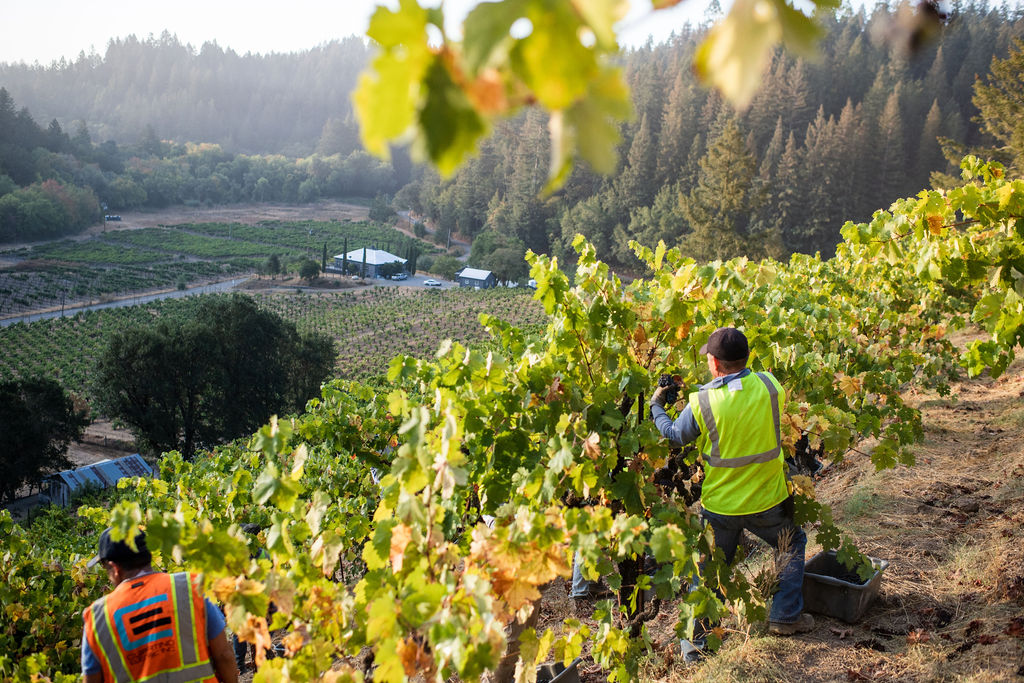
Source: https://martinelliwinery.com/vineyard/jackass-hill/
History & Significance: The steepest non-terraced vineyard in California, planted in the late 1880s by Giuseppe Martinelli. These perilously angled, dry-farmed, own-rooted Zinfandel vines produce a hedonistic, intensely flavored wine that has become a Martinelli hallmark and a living emblem of family perseverance.[29]
- Location: Forestville (Martinelli Rd).[29]
- Originally Planted: late 1880s.[29]
- Average Vine Age: ~135 years.
- Own-Rooted: Yes.
- Dry-Farmed: Yes.[29]
- Organic: Minimal-intervention tradition.
- Wineries: Martinelli “Jackass Hill” Zinfandel, Bedrock[29]
28. Galleano–Cantu Ranch (Jurupa Valley, Cucamonga Valley, CA)
History & Significance: The Galleano family has been farming in Jurupa Valley since the early 20th century, making them one of the last holdouts of Cucamonga’s once-vast vineyard expanse. The Cantu Ranch, with surviving blocks planted in the 1910s and 1920s, includes ungrafted, head-trained Zinfandel and Mission vines on alluvial sandy soils. This land tells the story of Southern California’s forgotten wine belt, once larger than Napa in acreage. Urban sprawl has swallowed nearly everything — warehouses, subdivisions, freeways — but the Galleanos persist, preserving this viticultural relic and producing deeply earthy, old-school Zinfandels that are cultural artifacts as much as wines.[30]
-
Location: Jurupa Valley, Riverside County (Cucamonga Valley AVA).
-
Originally Planted: 1910s–1920s.
-
Average Vine Age: ~100 years.
-
Own-Rooted: Yes (phylloxera-safe sandy soils).
-
Dry-Farmed: Yes.
-
Organic: Not certified, but minimal input, traditional practices.
-
Wineries: Galleano Winery (field blends, Zinfandel).
29. Compagni Portis Vineyard (Sonoma Valley)
History & Significance: A rare mixed white field blend (Gewürztraminer, Trousseau Gris, Riesling, and more) planted in 1954. Own-rooted and dry-farmed, this aromatic “heritage white” is lovingly preserved by Bedrock Wine Co., yielding perfumed, textural wines that are truly one-of-a-kind.[31]
- Location: Near Napa Rd/Castle Rd (Sonoma Valley).[31]
- Originally Planted: 1954.[31]
- Average Vine Age: ~69 years.
- Own-Rooted: Yes.[31]
- Dry-Farmed: Yes.[31]
- Organic: Yes (since 2010 under Bedrock).[31]
- Wineries: Bedrock “Compagni Portis” White Heritage.[31]
30. Cole Ranch Vineyard (Mendocino County, CA)

Source: https://www.californiaoutdoorproperties.com/listing/cole-ranch-appellation
History & Significance: Cole Ranch is one of California’s curiosities — the smallest AVA in the United States, covering just 60 acres. Originally planted in the early 1970s by John Cole, it was later acquired by Esterlina Vineyards and has since gained cult recognition for its Riesling, Cabernet Sauvignon, Merlot, and Pinot Noir. Despite its size, the vineyard’s isolation in a narrow mountain valley gives it a striking diurnal shift: warm afternoons and very cold nights, producing wines of precision and age-worthy structure. The Rieslings especially are highly prized, showing dry mineral elegance reminiscent of the Mosel.[32]
-
Location: Mendocino County, between Anderson Valley & Ukiah.
-
Originally Planted: Early 1970s.
-
Average Vine Age: ~50 years.
-
Own-Rooted: No (standard rootstocks).
-
Dry-Farmed: Mostly yes, depending on block.
-
Organic: Not certified, but sustainably farmed.
-
Wineries: Rootdown (owner), Cobb, Smith Story Wine Cellars, Tatomer (occasional Riesling), and others buy fruit.
31. Larkmead Vineyards (Calistoga, Napa Valley)

Source: https://www.larkmead.com/vineyards/
History & Significance: A historic estate dating to the 1890s with a tiny preserved block of 1895 Tocai Friulano—likely Napa’s oldest white vines—alongside benchmark Cabernets. Larkmead’s research-driven farming keeps heritage and innovation in productive conversation.[33]
- Location: Calistoga AVA.
- Originally Planted: 1890s; Tocai Friulano 1895.[33]
- Average Vine Age: Old white block 125+; Cab 20–30.
- Own-Rooted: Old white likely own-rooted.[33]
- Dry-Farmed: White block dry; Cab with drip.
- Organic: Estate farmed organically.
- Wineries: Larkmead (rare Tocai); estate Cabernets.
32. Inglenook (Niebaum Vineyard) (Rutherford, Napa Valley)
History & Significance: Founded in 1879 by Gustave Niebaum, Inglenook set early standards for Napa Cabernet. While much has been replanted, Coppola’s stewardship restored the estate’s glory and organic farming—an object lesson in how historic properties can be revived without erasing their past.
- Location: Rutherford AVA.
- Originally Planted: 1879.
- Average Vine Age: Mostly younger, with scattered legacy vines.
- Own-Rooted: Historic remnants; modern vines grafted.
- Dry-Farmed: Mixed (older blocks historically; drip today).
- Organic: Yes (estate certified).
- Wineries: Inglenook “Rubicon”.
33. Testa Vineyard (Redwood Valley, Mendocino)
History & Significance: Six generations on 1912 Carignane, Petite Sirah, Zinfandel, and Grenache make Testa a Mendocino touchstone. Organically farmed (with biodynamic elements) and home to a vibrant community of small producers who bottle its soulful field blends.[34]
- Location: Redwood Valley (Calpella).[34]
- Originally Planted: 1912.[34]
- Average Vine Age: 111+ years.
- Own-Rooted: Yes.
- Dry-Farmed: Yes.
- Organic: Yes (in conversion/parts biodynamic).[34]
- Wineries: Testa, Post & Vine, Donkey & Goat.[34]
34. Hofer Ranch (Cucamonga Valley, Inland Empire)
History & Significance: Once nearly 1,000 acres (by 1930), this 1910s vineyard remnant—now ~15 acres—survives as an agricultural island amid Ontario suburbia. Own-rooted Grenache, Mission, Palomino, and Rose of Peru farmed organically; listed on the National Register of Historic Places.[35]
- Location: Ontario, CA (Cucamonga Valley).[35]
- Originally Planted: 1910s (expanded through 1930s).[35]
- Average Vine Age: 80–110+ years.
- Own-Rooted: Yes.[35]
- Dry-Farmed: Yes.
- Organic: Yes.[35]
- Wineries: Galleano; A Tribute to Grace; Scar of the Sea.[35]
35. Chianti Station & Seghesio Home Ranch, Alexander Valley

Source: https://www.seghesio.com/story/vineyards/
History & Significance: Both owned by the Seghesio family and planted by their founder, Edoardo Seghesio, their "Home Ranch" was planted in 1895 (seven-acre field blend of primarily Zinfandel) and Chianti Station was planted in 1910, this tiny block of Sangiovese (with Malvasia Nera) is the oldest in the U.S. Lithe. Both produce savory, raspberry-scented reds that show how Italian heritage took root in Sonoma and never let go.[36]
- Location: Alexander Valley.[36]
- Originally Planted: 1895 & 1910.[36]
- Average Vine Age: 113+ years.
- Own-Rooted: Yes.
- Dry-Farmed: Yes.
- Organic: Estate farmed organically.
- Wineries: Seghesio, +.[36]
36. Original Grandpere Vineyard (Shenandoah Valley, Amador)

Photo by Randy Caparoso. Source: https://randycaparoso.blogspot.com/2015/04/the-original-grandpere-vineyard.html
History & Significance: Also known as “Vineyard 1869,” this plot is widely regarded as California’s oldest producing Zinfandel. The wines from Andis and Scott Harvey sing with spice and lift, proving that Civil War–era vines can still make utterly vibrant wine.[37]
- Location: Plymouth, Amador County.[37]
- Originally Planted: 1869.[37]
- Average Vine Age: 150+ years.
- Own-Rooted: Yes.
- Dry-Farmed: Yes.
- Organic: Low-input/heritage farming.
- Wineries: Andis “Original Grandpere”; Scott Harvey “Vineyard 1869”.[37]
37. Ritchie Vineyard (Russian River Valley, Sonoma)
History & Significance: Planted in 1972 by Kent Ritchie on volcanic tuff and Goldridge sand, Ritchie is a California Chardonnay grand cru. Old Wente selections yield crystalline, powerful whites with citrus oil, hazelnut, and saline minerality; Pinot Noir here can be wonderfully perfumed and lithe.
- Location: Eastern RRV (near Windsor).
- Originally Planted: 1972 (Chardonnay/Pinot Noir).
- Average Vine Age: ~50+ years.
- Own-Rooted: Grafted on rootstocks.
- Dry-Farmed: Largely dry with supplemental drip as needed.
- Organic: Sustainable farming.
- Wineries: Ramey, Rochioli, Paul Hobbs, Aubert, Littorai (various bottlings).
38. Limerick Lane Vineyard (Russian River Valley, Sonoma)
History & Significance: A historic Zinfandel ranch with blocks from the 1910s–1930s, revived by Limerick Lane Cellars. Mixed-black plantings (Zin, Petite Sirah, Alicante) produce layered, blue-fruited wines of lift and depth; an RRV counterpoint to warmer Dry Creek styles.
- Location: Northeast RRV (Healdsburg).
- Originally Planted: Early 1900s (with later replants).
- Average Vine Age: 80–110 years (old blocks).
- Own-Rooted: Mixed (old blocks own-rooted).
- Dry-Farmed: Yes (heritage blocks).
- Organic: Sustainable/organic-leaning.
- Wineries: Limerick Lane estate; Bedrock single-vineyard in select years.
39. Massa Vineyard (Monterey County)

Source: https://broccellars.com/blogs/vineyards/massa-vineyard-carmel-valley-ava
History & Significance: Formerly known as Durney Vineyard, Massa Vineyard is a rugged, mountainous site in Carmel Valley first planted in the 1960s. It quickly earned recognition for producing structured, ageworthy Cabernet Sauvignon and Zinfandel from its rocky, granitic slopes at elevations up to 1,500 feet. The vineyard was acquired by Bill Massa in the 1990s, who has preserved its heritage blocks and transitioned to organic and biodynamic farming. Massa has become emblematic of the Monterey backcountry ethos: remote, challenging, and fiercely independent. The wines carry a wild, savory mountain character, with natural acidity and longevity that make them among the Central Coast’s most distinctive mountain wines.
-
Location: Carmel Valley AVA, Monterey County.
-
Originally Planted: 1968.
-
Average Vine Age: ~55 years.
-
Own-Rooted: No (phylloxera-resistant rootstock).
-
Dry-Farmed: Partially; many blocks dry-farmed.
-
Organic: Yes (certified organic; biodynamic influences).
-
Wineries: Massa Estate Wines; formerly fruit sold to Bernardus and others.
40. Rorick Heritage Vineyard (Calaveras County, Sierra Foothills)

Source: https://www.forlornhopewines.com/about/
History & Significance: Matthew Rorick’s limestone-and-schist estate (notably a 1974 Chardonnay block with own-rooted vines) is a fountain of characterful varieties—from Trousseau to Riesling. High-elevation, rocky farming yields tensile, mineral wines that feel both Alpine and distinctly Californian.
- Location: Calaveras County (Murphys area).
- Originally Planted: 1970s (Chardonnay 1974); ongoing replanting with obscure varieties.
- Average Vine Age: 20–50 years.
- Own-Rooted: Some historic blocks (e.g., 1974 Chardonnay).
- Dry-Farmed: Mostly dry, with strategic irrigation for young vines.
- Organic: Regenerative/organic-leaning practices.
- Wineries: Forlorn Hope; guest fruit to Arnot-Roberts, Coteau Pavot, Dirty & Rowdy (historical).
41. Trout Gulch Vineyard (Santa Cruz Mountains)

Source: https://www.arnotroberts.com/vineyard/trout-gulch-vineyard/
History & Significance: Planted in 1980 at cool, fog-swept elevation just inland from the Pacific, Trout Gulch is a benchmark for oceanic Chardonnay and Pinot Noir. Citrus, chalk, and sea spray define the Chardonnay; red fruited, savory Pinot reads like a coastal postcard.
- Location: Aptos/Soquel hills (SCM).
- Originally Planted: 1980.
- Average Vine Age: ~45 years.
- Own-Rooted: Grafted on rootstocks.
- Dry-Farmed: Largely dry-farmed; minimal irrigation in drought.
- Organic: Practicing.
- Wineries: Ceritas; Kutch; Arnot-Roberts (various vintages).
42. Stampede Vineyard (Clements Hills AVA, eastern Lodi)

Photo by Randy Caparoso. Source: https://commons.wikimedia.org/wiki/File:Stampede_Vineyard_-_Zinfandel,_Mission_-_planted_1920s-1940s.jpg
History & Significance: Stampede Vineyard is one of Lodi’s true treasures — a head-trained, dry-farmed Zinfandel vineyard planted in 1928 on decomposed granite and sandy soils in the Clements Hills sub-AVA. The site had long been overlooked, but in the last decade has gained renown through the efforts of producers like Fields Family Wines and Maître de Chai. The wines are perfumed, lifted, and red-fruited, very different from the stereotypical heavy Lodi Zins. The vineyard name references the ranch’s rodeo history, adding to its Western lore. With vines creeping toward a century old, Stampede is part of Lodi’s renaissance in demonstrating finesse and heritage.
-
Location: Clements Hills AVA, eastern Lodi.
-
Originally Planted: 1928.
-
Average Vine Age: ~95 years.
-
Own-Rooted: Yes.
-
Dry-Farmed: Yes.
-
Organic: Practicing sustainable.
-
Wineries: Fields Family Wines, Maître de Chai, Precedent Wine.
43. Nervo Ranch Vineyard (Alexander Valley, Sonoma)

Source: https://bedrockwineco.com/it-takes-a-village/vineyards/
History & Significance: A steep, decomposed-granite site with 1890s–1910s mixed blacks (Zin, Carignane, Alicante). Once a Ravenswood staple, now championed by Bedrock and others for perfumed, nervy wines that honor Sonoma’s hillside field-blend tradition.
- Location: Geyserville hills (Alexander Valley).
- Originally Planted: c. 1896–1910.
- Average Vine Age: 110–125 years.
- Own-Rooted: Likely mixed.
- Dry-Farmed: Yes.
- Organic: Sustainable/organic-leaning.
- Wineries: Bedrock “Nervo Ranch”; Ravenswood (historic).
44. Sangiacomo Home Ranch (Carneros, Sonoma)
History & Significance: Family-farmed since the 1920s, with 1969 plantings that helped define cool-climate Chardonnay and Pinot Noir in Carneros. A foundational source for top wineries; a model of long-term stewardship and precision farming in wind-swept clay loams.
- Location: Sonoma Carneros (Arnold Dr/Los Carneros).
- Originally Planted: 1969 (modern grape era).
- Average Vine Age: 40–55 years (older blocks).
- Own-Rooted: Grafted.
- Dry-Farmed: Limited; drip as needed in droughty soils.
- Organic: Sustainable (CERTIFIED SUSTAINABLE).
- Wineries: Rombauer, Ramey, Patz & Hall (various bottlings).
45. Hyde Vineyard (Carneros, Napa)
History & Significance: Larry Hyde’s 1979 plantings (notably Hyde-Wente Chardonnay selection) became a byword for Carneros elegance: lemon oil, hazelnut, and sea breeze. Among the most influential Chardonnay sites in America, with Pinot Noir equally compelling in cooler pockets.
- Location: Napa Carneros.
- Originally Planted: 1979.
- Average Vine Age: 30–45 years (older parcels).
- Own-Rooted: Rootstock-grafted.
- Dry-Farmed: Limited; precision drip.
- Organic: Sustainable/organic-leaning.
- Wineries: Hyde de Villaine, Kistler, Aubert, Ramey.
46. Hirsch Vineyard (Fort Ross–Seaview, Sonoma Coast)

Source: https://www.tenzingws.com/hirsch-vineyards
History & Significance: David Hirsch’s pioneering, remote coastal site (first planted 1980) essentially defined true Sonoma Coast Pinot Noir—wind-battered, low-yield, intensely site-expressive. Today farmed biodynamically and organically, it remains a north star for terroir-driven Pinot.
- Location: Fort Ross–Seaview (2–3 miles from Pacific).
- Originally Planted: 1980 (multiple blocks since).
- Average Vine Age: 20–45 years.
- Own-Rooted: Grafted.
- Dry-Farmed: Mostly dry, with minimal drip if needed.
- Organic: Certified organic/biodynamic.
- Wineries: Hirsch estate; Williams Selyem, Littorai (historic sourcing).
47. Pisoni Vineyard (Santa Lucia Highlands, Monterey)
History & Significance: Gary Pisoni’s 1982–1984 plantings at 1,300′ made SLH synonymous with powerful, ageworthy Pinot Noir—inky yet vibrant, often with violet and black tea. Meticulous farming and low yields have made “Pisoni” one of California’s most coveted single-vineyard designations.
- Location: Santa Lucia Highlands (elevated bench).
- Originally Planted: 1982–84.
- Average Vine Age: ~40 years.
- Own-Rooted: Rootstock-grafted.
- Dry-Farmed: Largely dry; drip as needed.
- Organic: Sustainable; cover-cropped, low-input.
- Wineries: Pisoni Estate; Roar; Kosta Browne; Lucia.
48. Tablas Creek Vineyard (Paso Robles – Adelaida District)

Source: https://ediblesanluisobispo.com/tablas-creek-regenerative-organic-certified/
History & Significance: Founded by the Perrin family (Château de Beaucastel) and Robert Haas, Tablas Creek imported EVERY variety allowed in Southern Rhône and planted in 1989 through 2024, transforming the Central Coast. The first winery to earn Regenerative Organic Certification, it’s a lodestar for climate-resilient, soil-first farming and Rhône-variety excellence.
- Location: Westside Paso (Adelaida limestone).
- Originally Planted: 1989 (with later expansions).
- Average Vine Age: 20–35+ years.
- Own-Rooted: Mostly grafted; some experiments.
- Dry-Farmed: Substantial dry-farming; minimal irrigation.
- Organic: Certified organic & ROC.
- Wineries: Tablas Creek estate bottlings (Esprit, Patelin, varietals).
49. Rossi Ranch (Sonoma Valley)
History & Significance: A historic 1910 field blend ranch (Zinfandel, Grenache, Mourvèdre and friends) rescued from neglect and now farmed organically. Wines show red-fruited purity and savory spice—a quintessential Sonoma Valley voice preserved through careful rehabilitation.
- Location: Between Kenwood and Glen Ellen.
- Originally Planted: 1910 (multiple field-blend blocks).
- Average Vine Age: 100–115 years (heritage parcels).
- Own-Rooted: Mixed.
- Dry-Farmed: Yes (heritage blocks).
- Organic: Yes (current farming).
- Wineries: Bedrock “Rossi Ranch”; Desire Lines (select bottlings).
50. Saitone Vineyard (Russian River Valley, Sonoma)

Source: https://www.carlislewinery.com/saitone
History & Significance: Planted in the 1890s on benchland north of Santa Rosa, Saitone is a treasure of old-vine, head-trained Zinfandel with scattered heritage whites. Carlisle and Bedrock have revealed its deep, red-fruited core, floral spice, and supple tannin—an RRV icon hiding in plain sight.
- Location: North RRV (Piner/Olivet area).
- Originally Planted: c. 1895–1899.
- Average Vine Age: 120–130 years.
- Own-Rooted: Many historic vines.
- Dry-Farmed: Yes.
- Organic: Sustainable/organic-leaning.
- Wineries: Carlisle “Saitone Ranch”; Bedrock (occasionally).
Epilogue: Protecting Our Liquid History
The vineyards above (and so many more beyond our scope) are California’s viticultural soul. They survive because of passionate farmers and winemakers who recognize that once an old vineyard is gone, it’s gone forever. These sites are living reservoirs of biodiversity (often with rare grape varieties), history, and resilient genetics. They have weathered over a century of challenges – and now face new ones in the form of development and economic pressure.
The solution, as Chris Cottrell of Bedrock Wine Co. notes, is in our hands (and glasses): “The best thing we can do is buy old-vine wines. They may cost slightly more than entry-level wine…but they always come with an incredible piece of history to share.”[2] By enjoying and evangelizing the wines from Teldeschi, Evangelho, Bechthold, Old Hill, and their peers, we create a market that values preservation over destruction. Each bottle pulled from these venerable vines is a vote for their survival – a chance for those gnarled trunks to keep whispering stories of California’s past into future generations.
So here’s a toast to California’s great vineyards and the people safeguarding them: may these old vines continue to thrive and inspire, and may we meet again in 50 years to celebrate their 200th birthdays!
Footnotes — Direct Sources
- K&L Wine Merchants, “Why Old Vines Matter” (trade feature summarizing threats & preservation ethos) — https://www.klwines.com/
- Bedrock Wine Co., “Old Vines Are Worth Saving” (remarks attributed to Chris Cottrell/Morgan Twain-Peterson MW) — https://bedrockwineco.com/
- Historic Vineyard Society, “Teldeschi Ranch (Dry Creek Valley)” — https://www.historicvineyardsociety.org/
- Truett Hurst Winery (producer page citing Teldeschi fruit history) — https://www.truetthurstwinery.com/
- Bedrock Wine Co., “Evangelho Vineyard” (vineyard profile) — https://bedrockwineco.com/
- Sandlands Wine / Turley Wine Cellars, “Kirschenmann Vineyard” (producer vineyard pages) — https://sandlandswine.com/ ; https://www.turleywinecellars.com/
- Historic Vineyard Society, “Kirschenmann Vineyard (Lodi)” — https://www.historicvineyardsociety.org/
- Oakville Winegrowers, “To Kalon & H.W. Crabb History” — https://oakvillewinegrowers.com/
- Robert Mondavi Winery, “I-Block Fumé Blanc (1945 vines)” — https://www.robertmondaviwinery.com/
- UC Davis Library / Oakville AVA maps (To Kalon siting reference) — https://library.ucdavis.edu/
- Bien Nacido Estate, “Vineyard History & W Block” — https://biennacidoestate.com/
- Sanford Winery, “Sanford & Benedict Vineyard History” — https://www.sanfordwinery.com/
- Scar of the Sea / Sinor-LaVallee, “Bassi Vineyard” (producer vineyard pages) — https://www.scaroftheseawines.com/ ; https://www.sinorlavallee.com/
- Los Angeles River Wine Company, “Lone Wolf Vineyard Project” — https://www.lariverwine.com/
- Carlisle Winery, “Montecillo Cabernet” notes (vineyard background) — https://www.carlislewinery.com/
- Louis M. Martini / E.&J. Gallo, “Monte Rosso Vineyard History” — https://www.louismmartini.com/ ; https://www.gallovinestate.com/
- Beckstoffer Vineyards, “Heritage Vineyards: Dr. Crane, Bourn, Las Piedras, Georges III, Missouri Hopper” — https://www.beckstoffervineyards.com/
- Tor Wines / Realm Cellars (producer pages for Missouri Hopper & Beckstoffer sites) — https://torwines.com/ ; https://realmcellars.com/
- Bedrock Wine Co., “Pagani Ranch” (vineyard profile) — https://bedrockwineco.com/
- Bucklin Winery, “Old Hill Ranch” — https://www.buckzin.com/
- Bedrock Wine Co., “Bedrock Vineyard (Madrone Ranch)” — https://bedrockwineco.com/
- Heitz Cellar, “Martha’s Vineyard” — https://www.heitzcellar.com/
- Lodi Wine Commission, “Bechthold Vineyard (Oldest Cinsaut)” — https://www.lodiwine.com/
- St. Amant Winery, “Marian’s Vineyard” — https://www.stamantwine.com/
- Jessie’s Grove Winery, “Royal Tee Vineyard” — https://www.jessiesgrovewinery.com/
- Stirm Wine Co. / Birichino, “Wirz Vineyard Riesling” — https://stirmwine.com/ ; https://www.birichino.com/
- Marietta Cellars, “Gibson Block (McDowell Valley)” — https://www.mariettacellars.com/
- Broc Cellars, “Grenache Gris – Gibson Ranch” — https://broccellars.com/
- Martinelli Winery, “Jackass Hill” — https://www.martinelliwinery.com/
- Turley Wine Cellars, “DuPratt Vineyard” — https://www.turleywinecellars.com/
- Bedrock Wine Co., “Compagni Portis White Heritage” — https://bedrockwineco.com/
- Bedrock Wine Co., “Esola Vineyard” — https://bedrockwineco.com/
- Larkmead Vineyards, “Old Vines / Tocai Friulano Block (1895)” — https://www.larkmead.com/
- Testa Vineyards, “Our History (1912)” — https://testaranch.com/
- A Tribute to Grace, “Hofer Vineyard Grenache” — https://www.atributetograce.com/
- Seghesio Family Vineyards, “Chianti Station Sangiovese (1910)” — https://www.seghesio.com/
- Andis Wines, “Original Grandpere Vineyard (1869)” — https://andiswines.com/
- Ritchie Vineyard (grower site & producer pages) — https://www.ritchievineyard.com/
- Limerick Lane Cellars, “Estate & Historic Blocks” — https://limericklanewines.com/
- Ridge Vineyards, “Lytton Springs Estate” — https://www.ridgewine.com/
- Forlorn Hope Wines, “Rorick Heritage Vineyard” — https://www.forlornhopewines.com/
- Ceritas Wines, “Trout Gulch Vineyard” — https://www.ceritaswines.com/
- Ridge Vineyards, “Geyserville” (Old Patch/Trentadue) — https://www.ridgewine.com/
- Bedrock Wine Co., “Nervo Ranch” — https://bedrockwineco.com/
- Sangiacomo Family Vineyards, “Home Ranch (1969)” — https://www.sangiacomovineyards.com/
- Hyde Vineyard, “Vineyard History & Map” — https://www.hydevineyard.com/
- Hirsch Vineyards, “Farming & History” — https://www.hirschvineyards.com/
- Pisoni Family, “Pisoni Vineyard” — https://www.pisonivineyards.com/
- Tablas Creek Vineyard, “Regenerative Organic Certified® & Estate History” — https://tablascreek.com/
- Bedrock Wine Co., “Rossi Ranch” — https://bedrockwineco.com/
- Carlisle Winery, “Saitone Ranch” — https://www.carlislewinery.com/
Wine 101

Holiday Pairing Guide — 10 Essentials Thanksgiving Wine Pairing Guide: 10 Wines for a Delicious Feast Thanksgiving is our favorite kind of chaos: a table full of savory, sweet, crunchy, and creamy — all at...
Read more →Latest articles

Wine Education · Opinion Don’t Fear Non-Vintage: The Case for Blending Across Seasons We expect wine to behave like a time capsule. One year, frozen in glass. But a single season can be cruel or kind, and ...
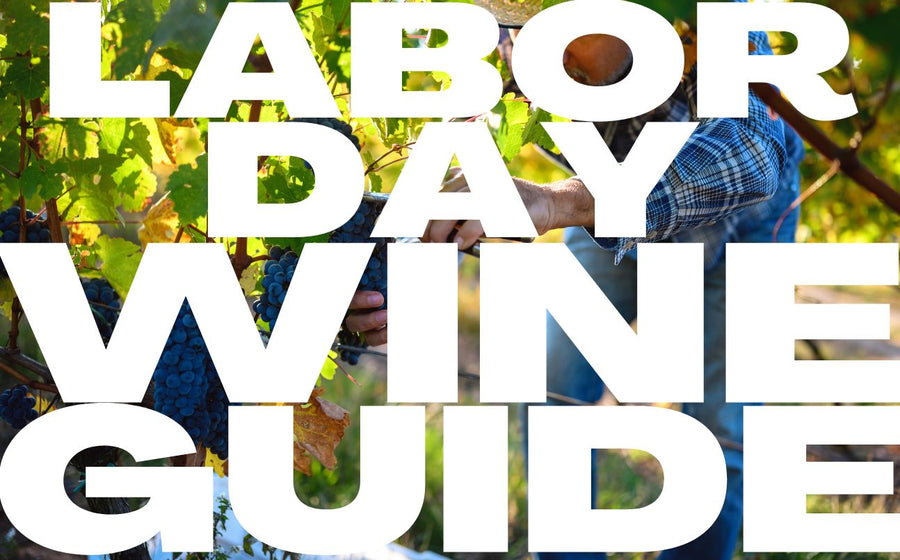
What's Below: BBQ & Grilling Perfect Red Wines Meat & Wine Matches Veggie Grill Wines Pool Party Essentials Crisp White Wines Rosé All Day Sparkling Options Party Planning Ho...

What's Below: European Gems Slovenia's Hidden Tuscany Austria's White Wine Wonderland Spain's High-Altitude Surprise New World Discoveries Mexico's Wine Revolution Brazil's Italian Influ...

We've paired every single Trader Joe's cheese with the perfect wine. Your next cheese board is about to get very, very good. The Ultimate Trader Joe's Cheese & Wine Pairing Guide Look, Trader Joe...

"Liberté, égalité, fraternité" The key to great Bastille Day wine pairing is choosing authentic French wines that complement traditional French foods without overpowering them. Rich cheeses, herb-crus...

What wine should you have on 4th of July? These (All American) ones!

"Wine was never trying to be cool. And thank goodness for that." Every few months, another think piece declares wine dead. "Gen Z has killed wine." "Hard seltzers are the new wine." "Why wine isn't cool...

What's Below: The Foundation Introduction The Absolute Reality Real Shopping Experience Digital & Psychological The iPhone Test Psychology of Enhancement Addressing the Purists ...
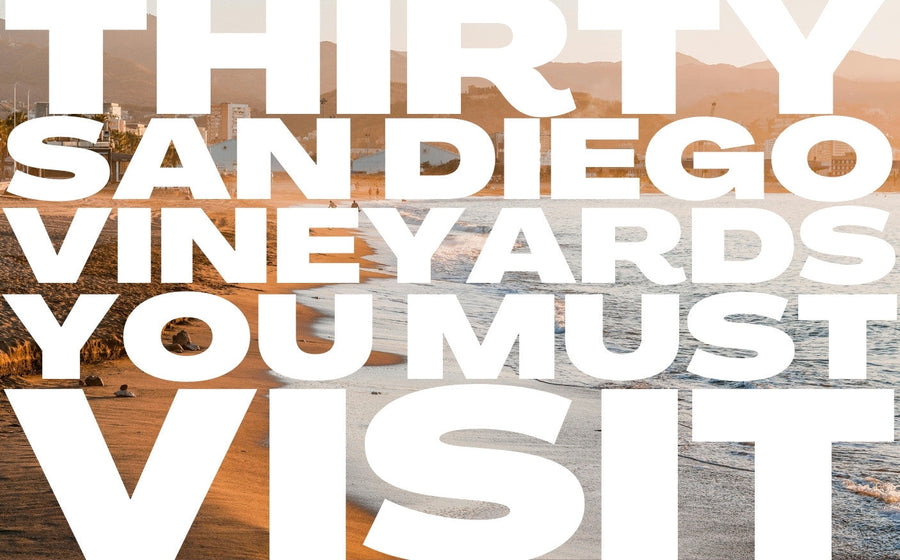
Image source: Valentina Vineyards. San Diego's top source of organically farmed wine grapes. San Diego County boasts over 172 active wineries and vineyards across diverse microclimates, from coastal va...

Italy boasts a rich tapestry of wine regions, each with its unique terroir, indigenous grape varieties, and winemaking traditions. Join us on a journey through all 20 Italian administrative regions, from int...

The journey of wine grapes from vineyard to bottle is a fascinating process guided by both science and tradition. Let's explore how vignerons determine the perfect moment to pick their grapes for optima...

Easter Wine Pairings That Won't Disappoint Easter is hopping our way, and whether you're hosting an elegant brunch or a family feast, the right wine can transform your gathering from merely memorabl...

Explore Sherry: Spain's Ancient Fortified Treasure Source: Consejo Regulador de los Vinos de Jerez y Manzanilla. If you are trying to get an excellent academic understanding of Sherry, its various styl...
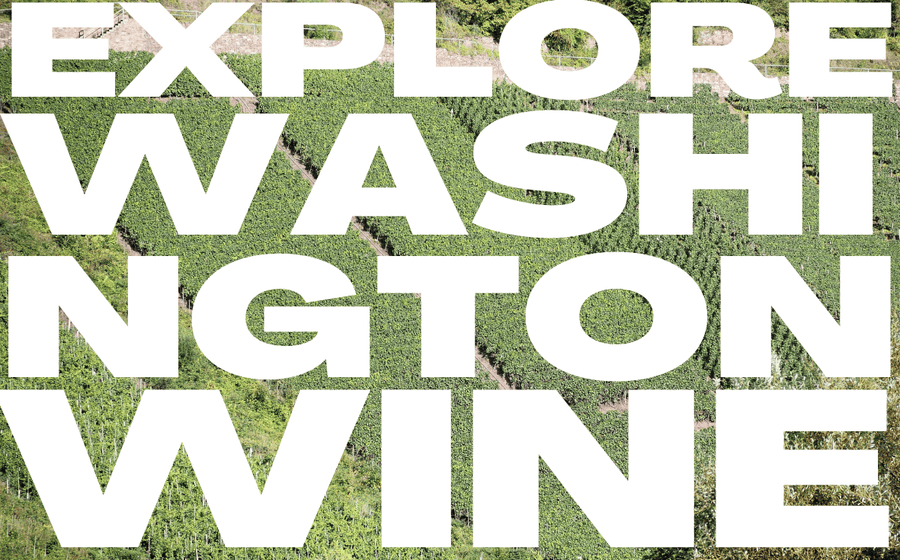
Explore Washington State Wine Source: Washington State Wine Commission. If you are trying to get an excellent academic understanding of Washington State, its various wine regions, and its role within t...







